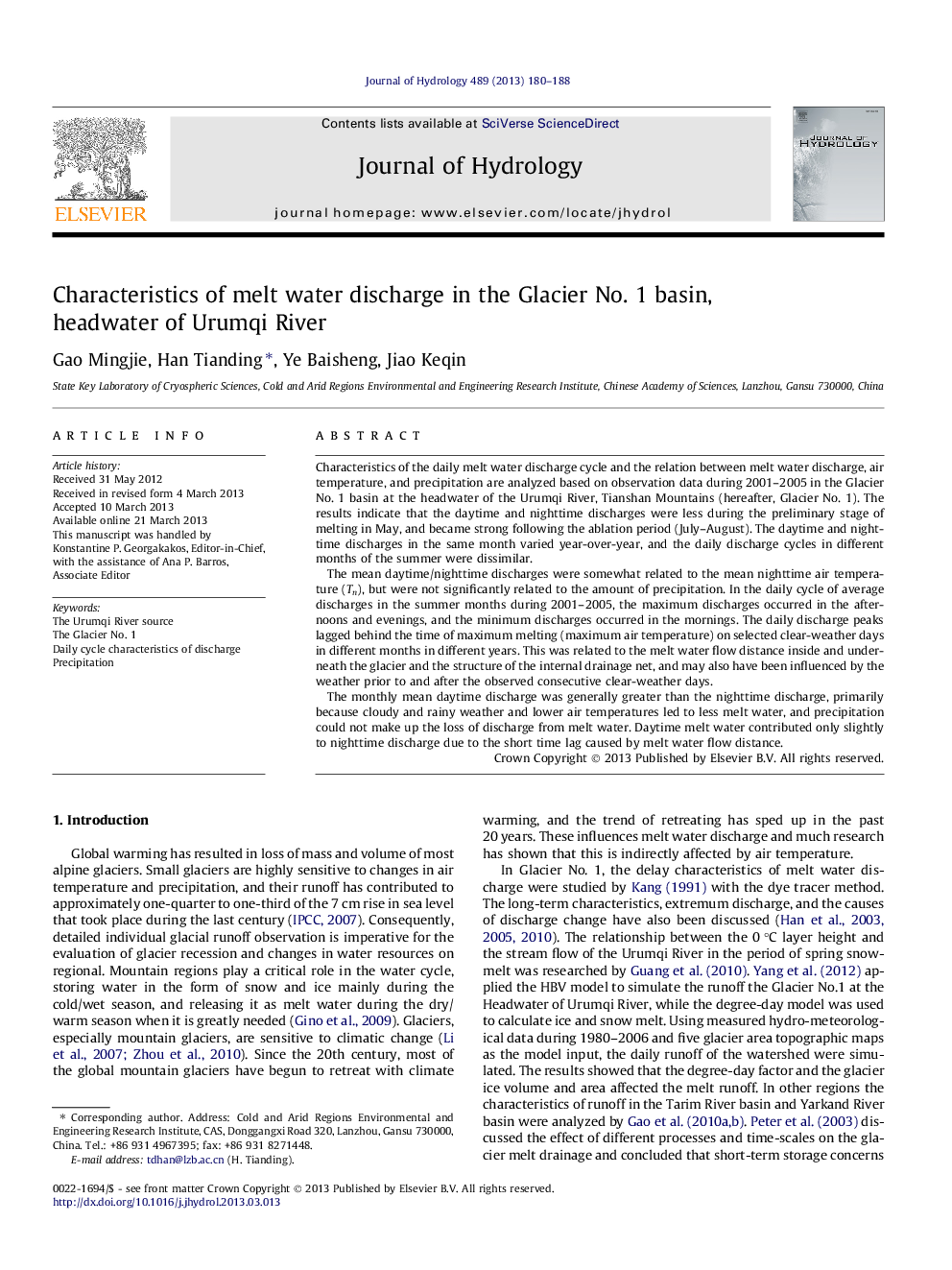| کد مقاله | کد نشریه | سال انتشار | مقاله انگلیسی | نسخه تمام متن |
|---|---|---|---|---|
| 4576331 | 1629959 | 2013 | 9 صفحه PDF | دانلود رایگان |

• Global warming has resulted in loss of mass and volume of most alpine glaciers.
• Mountain glacial runoff plays a critical role in the water cycle.
• The melt water discharge is indirectly affected by air temperature.
• This study mainly discusses the characteristics of the daily glacial runoff cycle.
• The monthly mean daytime discharge was generally greater than the nighttime discharge.
Characteristics of the daily melt water discharge cycle and the relation between melt water discharge, air temperature, and precipitation are analyzed based on observation data during 2001–2005 in the Glacier No. 1 basin at the headwater of the Urumqi River, Tianshan Mountains (hereafter, Glacier No. 1). The results indicate that the daytime and nighttime discharges were less during the preliminary stage of melting in May, and became strong following the ablation period (July–August). The daytime and nighttime discharges in the same month varied year-over-year, and the daily discharge cycles in different months of the summer were dissimilar.The mean daytime/nighttime discharges were somewhat related to the mean nighttime air temperature (Tn), but were not significantly related to the amount of precipitation. In the daily cycle of average discharges in the summer months during 2001–2005, the maximum discharges occurred in the afternoons and evenings, and the minimum discharges occurred in the mornings. The daily discharge peaks lagged behind the time of maximum melting (maximum air temperature) on selected clear-weather days in different months in different years. This was related to the melt water flow distance inside and underneath the glacier and the structure of the internal drainage net, and may also have been influenced by the weather prior to and after the observed consecutive clear-weather days.The monthly mean daytime discharge was generally greater than the nighttime discharge, primarily because cloudy and rainy weather and lower air temperatures led to less melt water, and precipitation could not make up the loss of discharge from melt water. Daytime melt water contributed only slightly to nighttime discharge due to the short time lag caused by melt water flow distance.
Journal: Journal of Hydrology - Volume 489, 10 May 2013, Pages 180–188